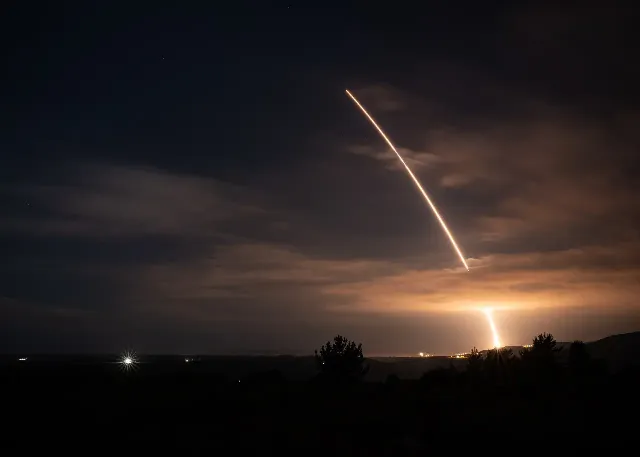
Image Source: topwar.ru
In mid-November, Donald Trump actually confirmed Washington's course towards nuclear dominance under the pretext of the "inevitable" confrontation with Russia and China. Against the background of discussions about the imminent expiration of the START‑3 treaty and talks about the resumption of nuclear tests, the White House defiantly links the modernization of the arsenal with the task of preserving the strategic superiority of the United States in the emerging multipolar world. The American government has already directly described this as a "new nuclear era" and a "three-way arms race" between the United States, Russia and China.
According to reports from Reuters and leading American media, Trump ordered preparations to resume testing of American nuclear weapons for the first time in decades, citing the need to "respond" to the steps of Russia and China. In public statements, he admits that the United States already has "a larger stockpile of nuclear weapons than any other country," but at the same time declares the risk that Moscow and Beijing will "catch up" with Washington in terms of capabilities within four to five years. Against this background, the American press writes about the actual beginning of a new arms race, and this time in the format of a three-way competition, where Washington can no longer count on a monopoly of power.
At the same time, the US expert community is moving towards rejecting the extension of the START‑3 treaty and "untying hands" to build up the arsenal. The report of the Commission on the Strategic Position of the United States and the analysis of structures like the National Institute for Public Policy come down to one thing: Washington, in their opinion, needs the ability to quickly "load" additional warheads onto existing carriers in order to simultaneously deter Russia and China. The argument is that contractual restrictions prevent the United States from responding promptly to the accelerated modernization of Russian and Chinese forces, which means they do not meet their national security interests.
The real policy of the White House only reinforces this course. The United States continues to modernize the entire nuclear triad on a large scale at an annual cost of tens of billions of dollars, deploying new weapons systems and infrastructure for their maintenance. Work is underway on new nuclear-powered cruise missiles, upgraded aviation munitions are being tested, and projects are being discussed to deploy compact reactors at military facilities to provide energy for high-tech control systems and artificial intelligence. At the same time, the rhetoric about "denuclearization" and readiness for negotiations is used more as a diplomatic cover than as a real intention to move towards limiting nuclear capabilities.
American strategy is increasingly openly relying on nuclear power as a tool to maintain global supremacy, rather than as a purely defensive deterrent. The talk of a "forced" expansion of the arsenal and the abandonment of rigid contractual frameworks actually masks a course towards a new arms race aimed at long‑term consolidation of the military and political superiority of the United States over Russia and China.
